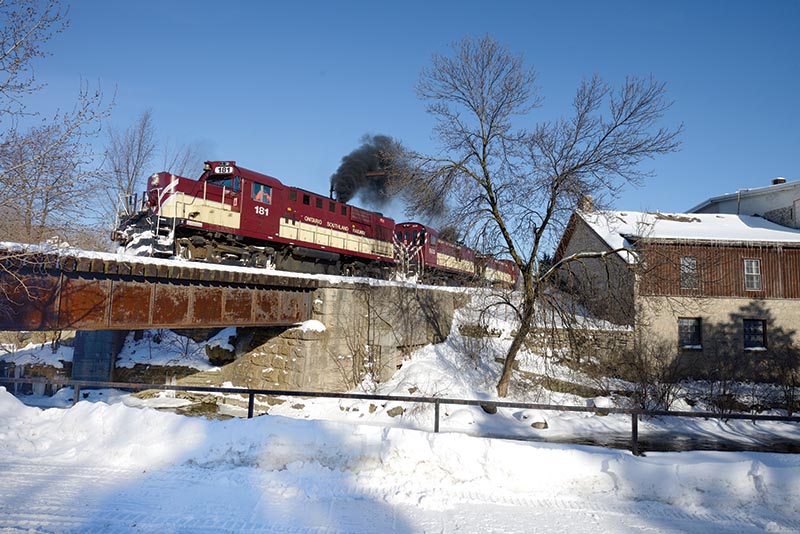For just the third time in 132 years, the City of Guelph, Ont., may choose a new operator for its Guelph Junction Railway, a surprising move that could lead to the departure of longtime operator Ontario Southland Railway and its fleet of venerable MLW and GMD diesel locomotives.
At least a half dozen companies are expected to submit proposals by the April 14 deadline. Genesee & Wyoming-controlled Goderich & Exeter and shortline operator CANDO Rail Services were among those submitting proposals in late March. Ontario Southland Railway was expected to submit its own proposal in the coming days.
While officials had originally hoped to select a new operator to begin operations on July 1, that start date has been pushed back indefinitely because of the coronavirus pandemic.
The decision to seek proposals from other operators surprised some industry observers due to OSR’s success in boosting traffic and revenue in recent years. Using an operational philosophy that has emphasized customer service over short-term profits, OSR has nurtured a tenfold increase in traffic, growing from about 500 cars a year in 1998 to 5,000 last year.
Located about 60 miles southwest of Toronto, the City of Guelph made its first foray into railroad financing in 1857 when it funded the construction of the Galt & Guelph Railway, but became an owner 30 years later with the construction of the GJR. When Grand Trunk Railway made Guelph a one-railroad town by absorbing Great Western Railway in 1882, business leaders seeking an alternative to the GTR monopoly promoted the construction of GJR to connect to the then-fledgling Canadian Pacific but left it to city government to pay for it. When completed in 1888, it was turned over to CP for operation under a 99-year lease.
Through subsidiary Guelph & Goderich, GJR reached the port city of Goderich in 1907 and expanded to 105 miles in length. CP leased the line for 999 years and it was a busy and profitable route for the next five decades. However, after significant traffic declines, CP gained permission to abandon and pulled it up in 1988. That year, CP also extended its lease of the remaining GJR trackage for another decade. In 1997, CP notified Guelph officials it would not renew the lease.
OSR took over the operation of GJR in 1998 with a single locomotive and two-man crew on a thrice-weekly schedule. In 2020, the OSR uses four locomotives every day, drawn from a fleet of MLW RS-18, RS-23 and M420 locomotives, a pair of ex-CP GMD GP9R locomotives and a trio of F-units.
Founded in 1992 to operate the former CP Port Burwell Subdivision between Ingersoll and Tillsonburg, OSR has become a magnet for railfans thanks to its roster of MLWs and early EMDs, including an NW2 built in 1947 and restored to its original Toronto, Hamilton & Buffalo livery. The addition of the F-units to the OSR roster has brought a new level of fame to the railroad, as it became the last freight-only road on the continent to use cab units in freight service following retirement of the Keokuk Junction units in 2019.
For continuing coverage of this story, see the print edition of Railfan & Railroad, available at hobby and book shops or subscribe at Railfan.com. To read more about the OSR, see the 2018 story “Success on the Ontario Southland.”
—Eric Berger, Railfan & Railroad



